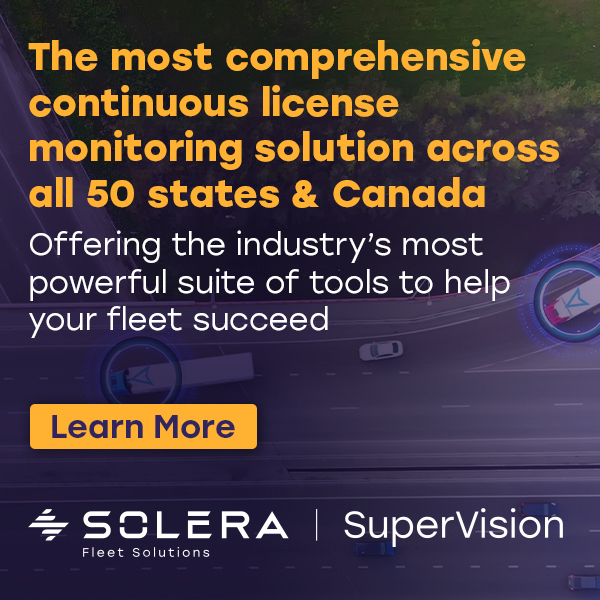
By Adlore Chaudier Ph.D., CFFM, Associate Vice President, Federal Fleet Consulting Services, Mercury Associates
Last year, the Trump administration reversed a decades-old trend toward the centralization of federal agency fleet administration, a move that may prove to be problematic because of a lack of strategic expertise at the agency level to improve fleet operational efficiency and which flies in the face of proof that centralized fleet management is a better approach.
The change came about via Executive Order 13834 that President Trump signed on May 17, 2018, which shifted overall responsibility for fleet strategy from the General Services Administration (GSA) to the White House’s Council on Environmental Quality (CEQ) and the Office of Management and Budget (OMB). A month later, the two bodies issued implementation instructions that handed over discretion to each of the federal government’s agencies that operate fleets.
Specifically, the CEQ and OMB are now leaving it to each of those fleets to determine for themselves the best ways toward achieving four statutory mandates: right-sizing, reducing vehicle miles traveled, replacing inefficient vehicles with more fuel-efficient vehicles, and aligning alternative fuel vehicles with a fueling infrastructure.
Since the 1950s, when federal fleet management was initiated by law under GSA, federal fleet management has consistently moved toward greater centralization under both political parties, and within the last two decades has taken significant and successful steps toward improved control.
Centralization: a fleet best practice
Centralization of fleet management authority and responsibility characterizes best-in-class fleet management programs. Fleet management has become a line of business for most organizations, and upper-level management has increasingly understood that fleet-user needs can typically be met more cost effectively through a consolidated approach to fleet management.
The clear trend in the industry has been and remains toward more rather than less consolidation. And to varying degrees, most public sector organizations have developed a centralized fleet management program.
The benefits of centralization have been well documented. They include:
• An effective span of control and clear chain of command;
• A vision sustained and supported via consistently employed communication means and methods;
• Reduced duplication of responsibilities, resulting in greater cost control and efficiency; and
• Enhanced standardization and control over systems, programs, acquisition, reporting, performance metrics, and operations at all organization levels
The fleet points of contact in the field for large, organizationally complex and geographically dispersed agency programs too often lack the level of professional expertise required to achieve the desired level of management and control of the fleet program. Centralization is essential for beginning to overcome this challenge. In general, centralization is the means whereby agencies can most successfully identify and implement the strategies and prioritize the actions they will take to implement the goals listed in the Implementing Instructions.
Agencies must up their game
For federal fleet management to continue to demonstrate increasing control of federal fleet assets, agencies must up their game. They must ensure that they have personnel with professional levels of knowledge and experience overseeing their fleet programs and they must ensure that fleet points of contact in their geographically dispersed operations have relevant training.
The challenges for agencies that own their fleet assets will continue to be significant; the challenges for agencies that lease their vehicles through GSA will be less because it provides greater guidance and control. However, even agencies that lease through GSA must take steps to establish strategies that meet the four overarching goals.
A Department of Homeland Security (DHS) Office of Inspector General (OIG) report entitled “DHS Does Not Adequately Manage or Have Enforcement Authority Over Its Components’ Vehicle Fleet Operations” details the centralization/decentralization problem all of the large agencies face. Although published in 2014, the challenges and issues described remain and may well become even more problematic.
After the United States Postal Service, DHS has the second largest civilian federal motor vehicle fleet. Given its complex bureaucratic structure and geographic dispersion, DHS has a decentralized fleet management structure and relies heavily on its 11 components with fleet vehicles to manage, report and control operations. The OIG report Executive Summary states:
“DHS does not adequately manage or have the enforcement authority over its components’ fleet operations to ensure that its motor vehicle fleet composition is right-sized. Each DHS component manages its own vehicle fleet, making it difficult for the DHS Fleet Manager to provide adequate oversight and ensure compliance with Federal laws, regulations, policies, and directives.”
And having a clear and detailed policy is not, in itself, a solution:
“Although DHS has policies and procedures that delineate roles and responsibilities for managing fleet operations, the components manage their own fleets, making it difficult for the DHS Fleet Manager to provide adequate oversight and ensure compliance with applicable policies.”
Our work with federal fleet programs across numerous agencies and their organizational components has shown that staffing is insufficient to the challenge. Even more challenging is the fact that the organizational components often resist headquarters control and the characteristics of their respective fleet operations may markedly differ.
Long-term federal fleet gains at risk
At first glance, the direction set by E.O. 13834 can appear reasonable and positive. However, the clear and overt shift in control of federal fleet management to CEQ and OMB may prove problematic. Although CEQ and OMB have played a significant role in federal fleet management for at least a decade, the lead agencies have historically been GSA (particularly the Office of Governmentwide Policy) and DOE, where assigned personnel have possessed background, experience and knowledge in fleet management.
The push toward decentralization of oversight and control to the headquarters offices of Executive Branch agencies places a greater burden upon them to manage and control their fleet operations, particularly where the fleet is owned. As the DHS OIG report suggests, however, even more decentralization may well occur as the organizational components within each agency push for greater autonomy. The long-term effort to centralize federal fleet management by all administrations since the 1950s may be at risk.




